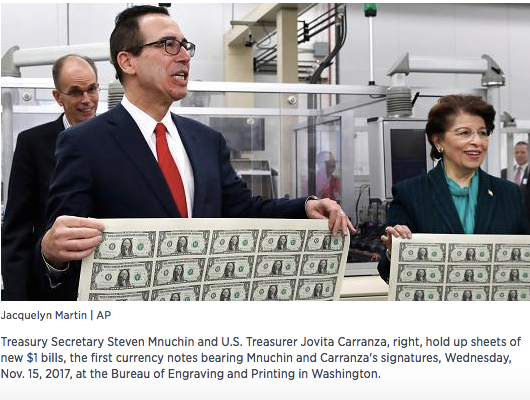- The Treasury quietly released data showing it would need to borrow $955 billion in 2018, and more than $1 trillion in the two subsequent years.
- The government’s financing needs come as the economy is picking up escape velocity.
- Rising interest rates may undermine growth, and hamper the government’s plans.
- Don’t look now, but the U.S. government needs to borrow more money at exactly the wrong moment — when interest rates are spiking.
Last week, in a development first reported by The Washington Post, the Treasury Department quietly released data estimating its 2018 borrowing needs would check in at $955 billion, then top $1 trillion in the next two fiscal years. Those sums are considerably higher than last year’s $519 billion in debt issued, and an upward revision to estimates released by the Treasury in late 2017.
The federal government’s voracious financing needs come at a time when it’s already pulling in record levels of tax revenue, to the tune of $444 billion in October through November 2017.
The Treasury’s projections are also in line with an analysis by the Wharton School at the University of Pennsylvania last year, which estimated that the GOP’s tax cut would add upwards of $2 trillion in federal debt over the next decade.
Given the turmoil in markets and the broad-based tax cut just signed into law, the Treasury’s timing arguably couldn’t come at a worse time. Interest rates recently hit their highest level in four years, which have ricocheted across markets and prompted investors to sell everything in sight.
- Read full article




